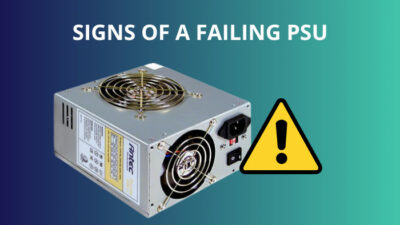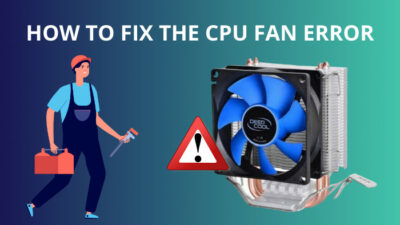The monitor is an output device on your computer that visually shows you the results of what you are doing with your other input devices.
Monitors are like television. There is a display, and you can see bright and colorful visuals. People are shocked at how expensive they are. Not understanding why monitors are worth the money can make you look for cheaper alternatives.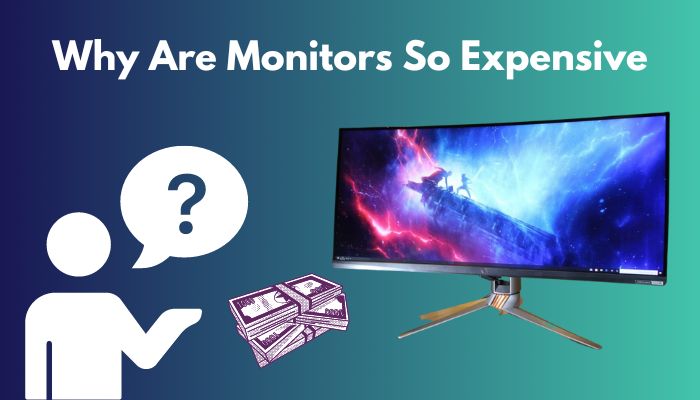
As a technology geek, I want to get rid of your confusion for you. I will explain why monitors are priced so high and what advantages a good monitor can bring. You can then assess whether those advantages are worth it for you.
So keep reading this article until the end to learn the answer to the question, “Why are monitors so expensive?”
What Factors Make Monitors So Expensive?
A monitor can be expensive because of various factors. Size, longevity, innovation, the type of display being offered, and the resolution are some of the things that can make a monitor expensive. There are also some factors of economics, such as supply and demand, that can make monitors expensive.
A monitor is what ensures that all that work your CPU and GPU are doing to give you the best possible visual performance is not wasted. Without an excellent display, even with the best processor, graphics card, and operating system, your computer won’t look as good as it could.
But if you need a high-end monitor for gaming or productivity, you’ll need to make a substantial investment.
Many folks don’t realize how much more expensive they are. A high-end gaming monitor could cost around $1000. That is pretty crazy when you compare it with televisions of similar sizes. But you know what? The prices may just seem worth it.
Here are the reasons why monitors are so expensive:
1. It Does not Need Replacing Very Quickly
The fact that you don’t need to change monitors very frequently is another factor in the high cost of monitors. Because businesses also need to make money from the units they sell, durable items are expensive.
On the other hand, buying a monitor would be more affordable if its lifespan were only one or two years. A high-quality monitor can last you more than ten years if you invest in one.
2. Good Monitors Offer Good Resolution
Monitors can be of different quality. One of the qualities people look for in a monitor is high resolution. If the other specs are similar, a monitor with a higher resolution will be more beneficial than a monitor with a lower resolution.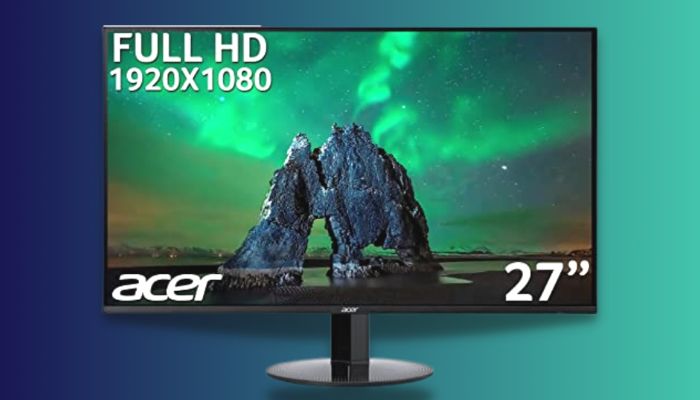
More information can be seen on a monitor with a higher resolution. The number of pixels a screen can display horizontally and vertically is the unit of measurement used when discussing screen resolution.
A screen with a 1920 x 1080 resolution (often called 1080p) may show 1,080 pixels vertically and 1,920 pixels horizontally.
The clearer and more detailed the visual quality, the more pixels a screen can display. But when it comes to image quality, a screen’s display capacity for pixels isn’t the only thing at play. There is pixel density as well.
The sizes and resolutions of monitors vary greatly. Frequently more extensive and smaller displays with the same number of pixels. A 32-inch monitor and a 42-inch monitor can have the exact resolution.
But the smaller monitor will have more pixel density and, thus, will display sharper images. But that does not mean smaller monitors are better. Larger monitors have way more benefits. But for the exact resolution, a smaller monitor will display data better.
Follow our guide step-by-step to Fix Motherboard Not Detecting Monitor.
3. Bigger Monitors Are More Expensive
Bigger televisions cost more. So it is not a surprise that it is the same for monitors. There are numerous advantages to having a large monitor.
It would be simpler to handle documents if you had a larger monitor because you could maximize the space with many windows of comparable media, such as resources, how-to manuals, or items with similar data.
Comparing two or more separate files won’t ever be as simple as comparing them side by side.
A larger monitor is one of the best time-saving tools you can get if your job requires multitasking. Because you can put them side by side, avoiding alt-tabbing or switching between multiple apps.
Manufacturers like to market bigger monitors as well as they can. The benefits are real, and the demand is high too. So, bigger monitors are usually much more expensive.
4. Monitor Manufacturing Costs Can be High
LCD and LED monitors are in high demand. LED monitors are highly efficient. They require low maintenance and last a long time.
LCD monitors are lighter than LED monitors, and they consume less power. LCD monitors can display millions of colors. But they are slower than LEDs, require more light sources and have more restrictive viewing angles.
Both LCD and LED technologies are expensive. However, because of its advantages, LED costs more. The manufacturing cost of high-end monitors is pretty high as a lot of advanced technology is required to build a monitor that meets all the modern demands.
5. Innovation and Features Add to the Price Tag
The cost of a product can depend on supply and demand. When buying monitors, the features are one of the first things that are looked at.
Monitors with good features have higher manufacturing costs because of the technology and are also more expensive because of their demand.
Similarly, innovative monitors set the trend, and everybody wants the first bite. They are instantly popular among the masses, and everybody is usually curious about the advertised innovation.
Because of the high demand, the prices start pretty expensive and stay that way for a while.
These factors can influence monitor prices and are a big reason behind why monitors are so expensive.
Why Are Monitors More Expensive Than TVs?
Monitors can be even more expensive than TVs because of some other quality. Even though both displays may do the same thing, some monitors specialize for specific purposes and offer more than a high-end TV.
Here are the reasons why monitors can cost more than televisions:
1. Higher Refresh Rate
The refresh rate contributes to monitors’ costing more than TVs. The refresh rate is crucial if you play PC games.
It is the interval of time between updates to the screen. This implies that a high refresh rate in video games displays a more precise movement of your mouse or character.
The motion appears smoother when the refresh rate increases because more information is presented to your eyes in the same period. Keep in mind that a video is a collection of still images rapidly displayed to create the illusion of motion.
Standard monitors are typically 60Hz. However, you may also get monitors with higher refresh rates, which are usually designed for gaming. Higher-tier displays typically have refresh rates of 144Hz or even 240Hz.
Check out some of the best 5 ways to tell if your employer is Monitoring your Computer.
2. Scale of Production
Monitor sales are usually lower than TV sales. As a result, monitors have not been produced the same way televisions are. Because of insufficient supply, the prices of monitors are affected in comparison. Monitors end up becoming a bit too expensive.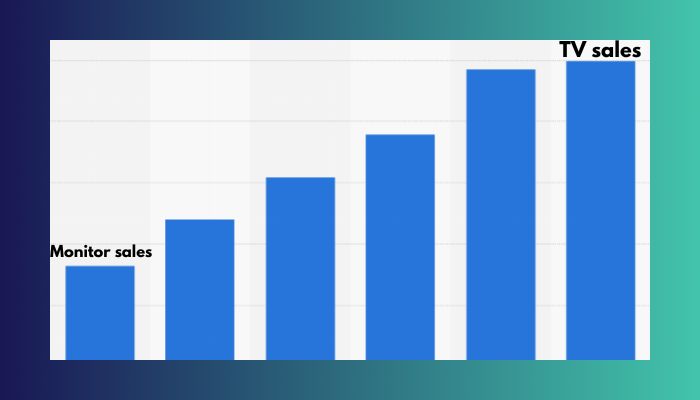
3. Target Audience
The target audience of a gaming monitor will be a bit richer than your average guy looking to buy a television.
There is also the factor called competition.
TV has a vast and diverse viewership. Some consumers favor investing in big TVs with the greatest resolution. Many favor inexpensive, basic TVs.
Due to the market size, there is fierce competition among TV manufacturers. Along with well-known brands, several lesser-known or even generic brands vie for consumers’ business.
Most TV makers are forced to set their prices low as a result. If they don’t, there’s a significant probability that a rival business will take their clients.
However, it isn’t always the case with computer monitors.
Although there is some competition among monitor makers, it is more about features and performance than price. Gamers and professionals are typically their target market. Again, these people are usually wealthier.
4. Sharper Audio Quality
You typically have a few options for audio quality regarding TVs. However, purchasing speakers is usually necessary if one wants better audio quality.
As manufacturers know that professionals and gamers depend on high-quality audio, monitors have superior audio to TVs.
Professionals need to interact with their clients, coworkers, and employees. To fully immerse themselves in the gaming experience, gamers also require it.
The manufacturing company must invest more in premium materials to create speakers with high-quality audio. This adds up to the manufacturing cost, so the monitor is sold at a higher price.
5. Customization
While certain personalization choices are available for TVs, most are pre-made.
A monitor is more expensive than a television since you can personalize your image in great detail.
You can change the aspect ratio and other necessary settings.
6. Additional Features
Additional features that are not common can make monitors much more appealing than TVs. Features such as anti-blur technology, high color image accuracy, high response rate, and many other features can make the monitor a more attractive purchase compared to a TV.
This is another reason why monitors can be more expensive than TVs.
Aside from this, televisions have less longevity compared to monitors. Monitors simply provide more features that are targeted toward gamers and professionals. This is why monitors are more expensive than TVs.
Read more on how to Fix Monitor Goes Black For a Second.
Why Are Gaming Monitors So Expensive?
Gaming monitors are special monitors made for gamers. The performance of these monitors is enhanced in certain areas to maximize the gaming experience.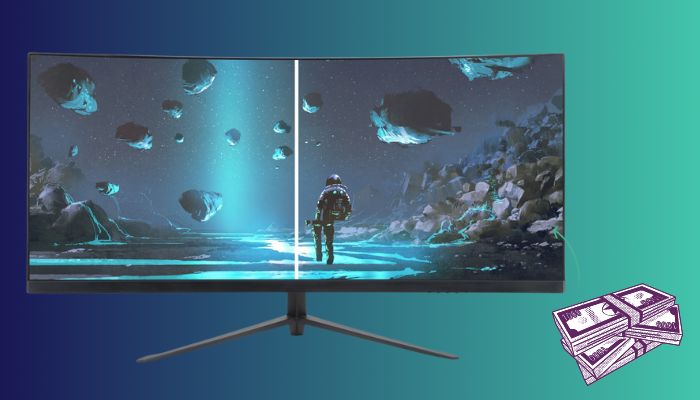
As gamers need to process information faster to get ahead of their competition, gaming monitors can appeal to gamers. The monitors have superior technical qualities that allow more data to be processed in the same amount of time.
Of course, these features do not just magically exist. A lot of investment is required to add those features to a gaming monitor. The buyer has to pay for those costs, which is why a gaming monitor is more expensive than your usual monitor.
The term “gaming” monitor carries with it a particular reputation. Gamers will also spend a lot of cash if it helps their gaming and frequently upgrade different parts of their setup.
It’s simple to win over this community by releasing the next big thing to improve your gaming experience. If gaming businesses assert their new display can outperform the PC’s requirements, it will sell even better.
So it is easy to market gaming monitors to the target audience. But the target audience itself is not that big. So, combining all these factors, gaming monitors are sold at very high prices.
Conclusion
Sometimes you may have to overpay for the brand, but monitors offer a lot to justify their high prices. What you need to identify are precisely the features that you need. If you do not want advanced features, you can buy a cheap monitor and be satisfied.
If cheap monitors do not satisfy your purpose, you may need to spend a lot to get all the features you want. You can look for lesser-known brands to buy quality products for a lower price. But make sure that you know what you are doing.
If you have any queries, please comment below! Also, let me know about your favorite monitors on the market for different price ranges. Other readers might find your input pretty helpful.

